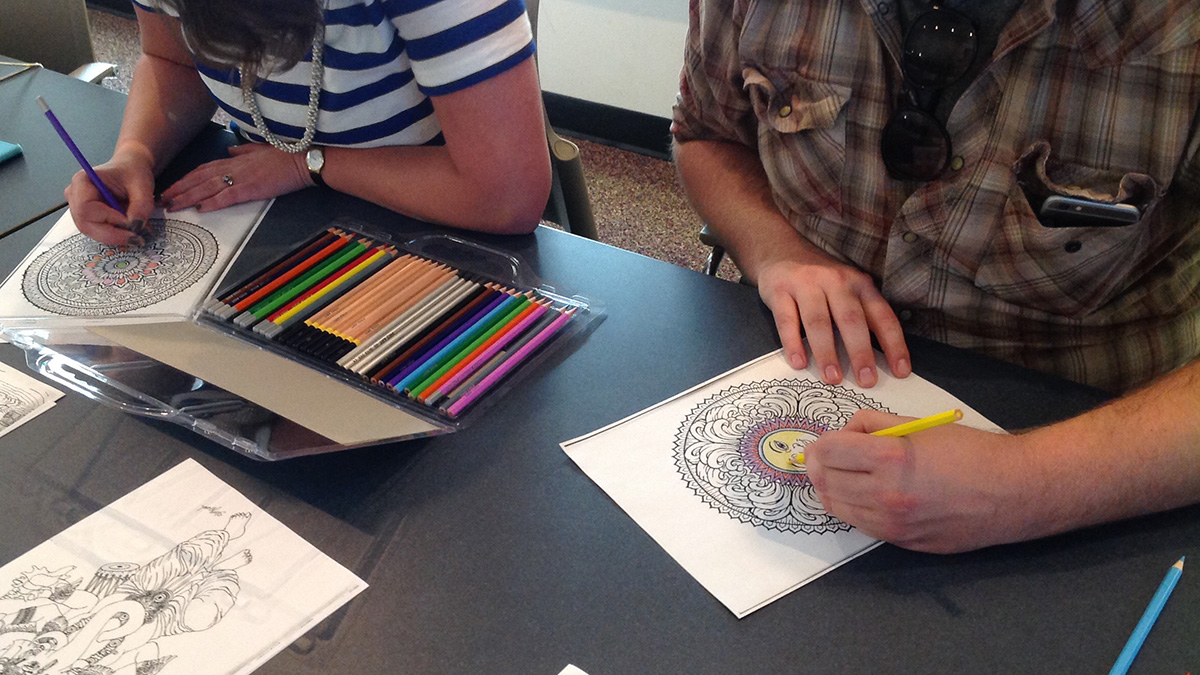Adult colouring books: Therapeutic art, but not art therapy
 Supplied - Jenn Gaylor
Supplied - Jenn GaylorWhile adult colouring books might be advertised as tools for stress management, experts question their therapeutic value.
When colouring books are marketed as art therapy, art therapists consider this to be inaccurate labelling, as colouring books aren’t the same as doing actual art therapy, Ara Parker, a St. Stephen’s College faculty lecturer in art therapy, said.
“A colouring book is not therapy. It’s not a therapy session with a therapist,” Parker, who also chairs the Department of Psychotherapy & Spirituality, said. “It doesn’t necessarily do the same work that you might do as a client working with a psychologist … Is it beneficial to colour? To listen to music? To read poetry? For mental health purposes — sure. Can it meet some of the same goals that working with a therapist would offer? No.”
Parker feels that colouring books for adults is a contentious subject among art therapists, as the medium doesn’t include the training and research that defines the discipline of art therapy.
“A colouring book is exactly that: it’s a colouring book,” Parker said. “I think many art therapists would be more comfortable if those colouring books were called therapeutic or mindfulness practice, but it really isn’t art therapy.”
Art therapy is a form of psychotherapy where a patient expresses themselves with art under the guidance of a professional art therapist. A professional art therapist has trained in counselling, psychology, psychotherapy, and has specialized in art therapy specifically as a post-master’s degree. This training helps them communicate and understand their patients through non-verbal expression such as painting and sculpting.
Art therapy and colouring books are commonly associated with children, who are less cognitively-developed and struggle with expressing themselves verbally, Parker said. But colouring books can still be therapeutic for adults — Parker said they’re helpful for university students wondering about their place in the world. Art therapy helps them strike a balance between performing adequately as an individual while still remaining a full creative human being, Parker said.
“I wish U of A students could avail themselves to art therapy more than they do,” Parker said. “It’s a wonderful way to explore one’s creativity, develop as an individual, integrate all of the different aspects and elements of study and development going on and provide tremendous release.”





As an art therapist and an artist, I would like to appreciate the writer for this distinction, as there are so many who call doing anything with art, art therapy. I also would like to share that art therapy equally beneficial for healthy fully functioning adults as it is for children, those with alzheimer’s etc. Thank you again.